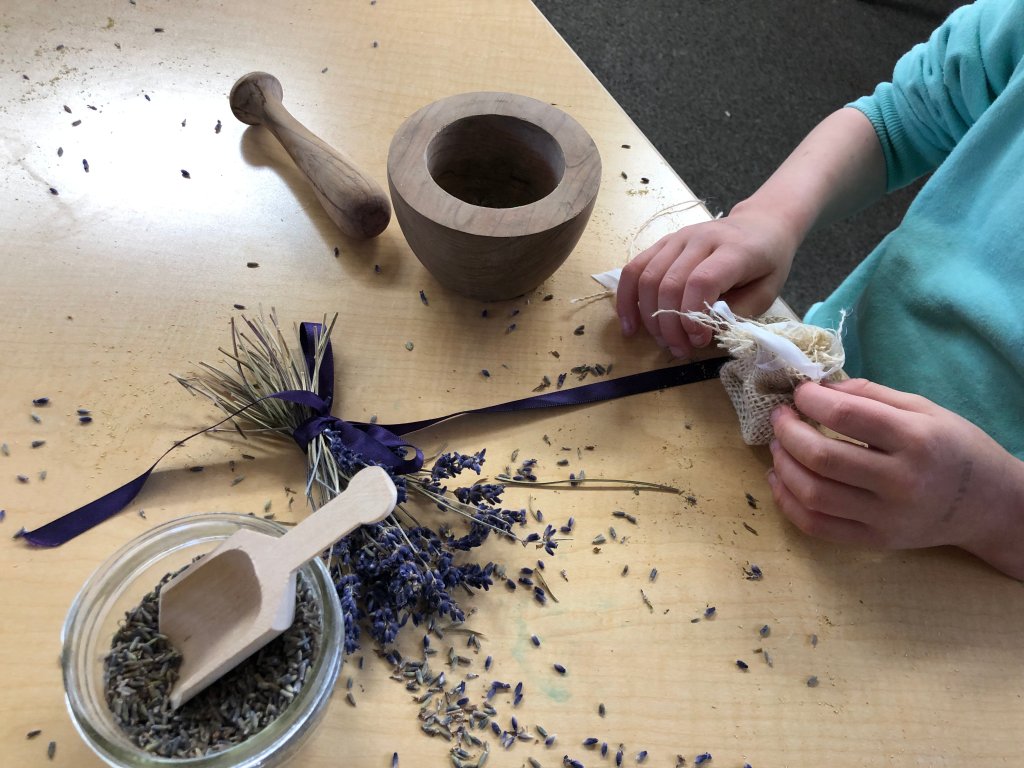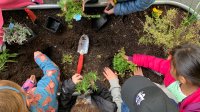Planting a Garden That Reinforces SEL
Social and emotional herb gardens offer young students a sensory learning experience and a chance to explore their feelings.
Your content has been saved!
Go to My Saved Content.There are countless benefits to gardening with young children, including spending time in nature, experiencing life cycles in real time, and improving attention.
Herb gardening is an especially joyful way to get young children involved in the garden. The plants are easy to grow, are readily available at garden centers and nurseries, and offer a rich sensory experience of smells, colors, and tastes. Thanks to the connection between our senses and our emotions, herbs can offer us an enjoyable way to delve into social and emotional learning (SEL).
I learned about social and emotional herb gardens during a seminar with sustainability consultant Koh Ming Wei, who holds a PhD in sustainability education. Her lecture inspired me to try this project with my kindergarten class.
Getting Started
My first step was to select strong-smelling herbs that I thought my students could use in a variety of ways—in art projects, sachets, and herbal teas. I opted to use herbs that were easily purchased at a local nursery and that I could also buy in dried form at my local natural foods store. This proved important, since the children use many more dried leaves and flowers than our small, newly planted herb garden could provide.
Once I selected six plants (chamomile, lavender, mint, rosemary, lemon balm, and sage), my students worked together to plant them in a small trough in front of our classroom. As they reflected on the planting experience, students were already noting the ways in which gardening and interacting with herbs were impacting their energy.
One student reflected on preparing the transplant, saying, “It felt calm squeezing the plant’s roots.” Another noticed the smell of a plant’s leaves and how it made them feel, saying that “it felt refreshing smelling the lemon balm.”
Exploring Dried Herbs
After planting the seedlings, we invited the children to explore the dried form of our new plants. Since the plants were not yet established enough to harvest, I brought in dried herbs, and the children moved through the classroom, investigating each herb’s scent.
We gathered and asked the children to share any feelings they noticed as they smelled the herbs. Were any calming? Energizing? Children shared how the herbs made them feel, and then were invited to make sachets using herbs that felt calming and energizing.

Interestingly, the same scent inspired different feelings in different children. For example, some found lavender energizing, while others found it relaxing. Rather than try to teach children about the botanical properties of the different plants, we celebrated their individual experiences of each herb.
After creating calming and energizing sachets, the children wrote about their special blends. They drew and painted pictures of the herbs that they included in each sachet, labeling them, and recording how the herbs affected their emotions.
Children took home their two sachets, along with the art they created to accompany them. We encouraged families to find a way to include these tools in a quiet place, such as a basket next to a child’s bed or another cozy area of the home. We kept extra sachets and artwork for our classroom Peace Place, where children are invited to reset their energy during the school day.
More Ways to Explore
After our initial planting and sensory exploration of the herbs, many children were interested in continuing their exploration of our herb garden.
Some chose to write and decorate frozen-pop sticks to label the plants growing in our garden. Others decorated wooden faces to show the emotions that each herb brought up for them and “planted” their faces near the corresponding herb in the garden. And still others kneaded herbs into a batch of plain salt dough, incorporating herbs and then creating faces showing how the herb made them feel.
As our herb garden matures and (hopefully) blooms, we are all excited to harvest and dry herbs to use in next year’s explorations. The children are also looking forward to using their homegrown herbs to create custom tea blends to enjoy during our classroom tea parties. There are a multitude of opportunities to explore our experiences through writing: recording recipes, journaling about experiences, writing labels for our tea blends, and more.
Just six plants have provided our class with many hours of joyful investigation and exploration. Children have gotten their hands dirty, worked hard applying their writing to a real-world context, and developed a richer vocabulary for their emotional states. As the days get longer and our plants become more established, our social and emotional herb garden is sure to provide countless more opportunities for learning.
